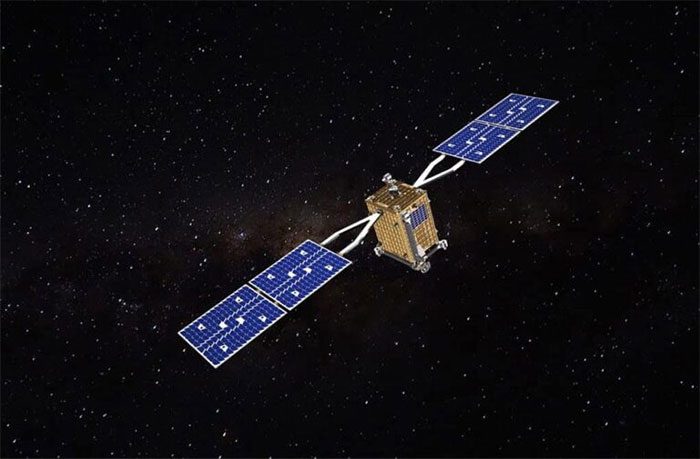Debris from the explosion of the Intelsat 33e communication satellite poses a threat to hundreds of satellites in geostationary orbit, including those operated by China.
According to the U.S. Space Force, the Intelsat 33e satellite, manufactured by Boeing for the U.S. company Intelsat, mysteriously broke apart in Earth orbit on October 21. The satellite provided broadband services across Europe, Africa, and the Asia-Pacific region.
Intelsat reported that their 33e satellite weighed 6,600 kg, was roughly the size of a shipping container, and was launched in 2016. The satellite experienced an “anomalous event” on October 19 and completely disappeared at an altitude of about 36,000 km from Earth.
Reports from commercial companies and the Russian space agency Roscosmos indicate that observers initially detected about 20 pieces of debris scattered across the orbit, but this number has now increased to over 80.
Astronomer Jonathan McDowell from Harvard, an expert in space activities, stated that the altitude of Intelsat 33e makes tracking the debris more challenging, but it “certainly” poses risks to other satellites.

The Intelsat 33e satellite manufactured by Boeing exploded in orbit. (Photo: Internet).
“It’s difficult to assess the severity of the incident”, McDowell told the SCMP on October 24. He mentioned that the incident could be due to a collision with space debris or an internal issue, such as a propulsion system explosion.
The Intelsat 33e satellite was positioned in geostationary orbit, much farther than low Earth orbit, where most spacecraft, including the International Space Station and China’s Tiangong space station, are located.
China operates several satellites in geostationary orbit, including the Fengyun weather satellite and the BeiDou navigation satellite system, as well as the Zhongxing communication satellites serving both civilian and military purposes.
This year, China has also launched three “high-orbit internet satellites” into geostationary orbit, although little information has been released about them.
According to expert McDowell, the scale of the Intelsat 33e incident may be similar to the major space accident China experienced in August when the upper stage of the Long March 6A rocket exploded in low Earth orbit during the deployment of the first batch of satellites for the Tianwen broadband constellation.
The U.S. Space Command and commercial monitoring companies estimate that there are over 700 pieces of space debris from this explosion.
“Both incidents are among the worst we have ever seen in space. There will certainly be some risks to other satellites”, McDowell stated.
However, the Kessler effect—one of the greatest threats posed by space debris—is less likely to occur in geostationary orbit due to the much larger volume of space compared to low Earth orbit, and the relative velocities between objects are also lower.
In 1978, NASA scientist Donald Kessler described a scenario where the density of objects in low Earth orbit could become so high that collisions between debris would create even more fragments, leading to a chain reaction that could render some orbits unusable.


















































